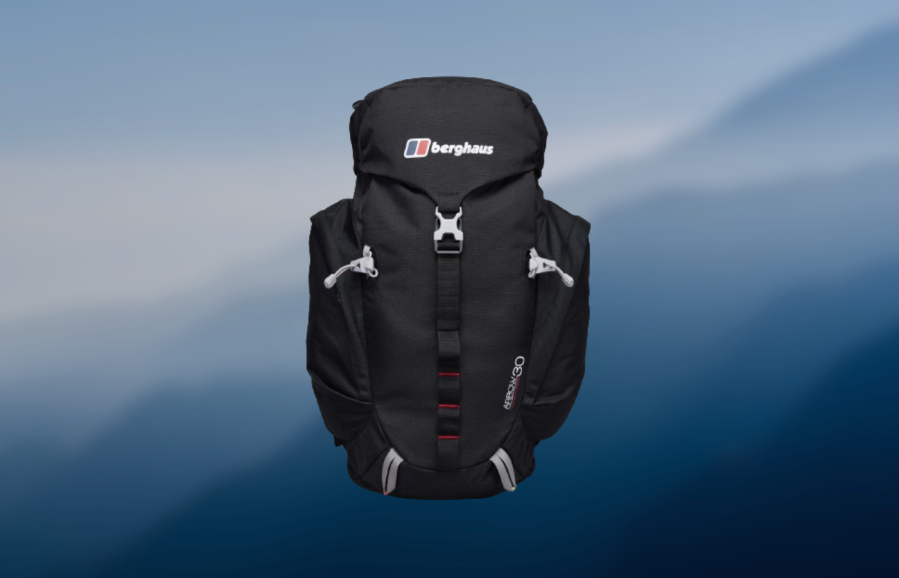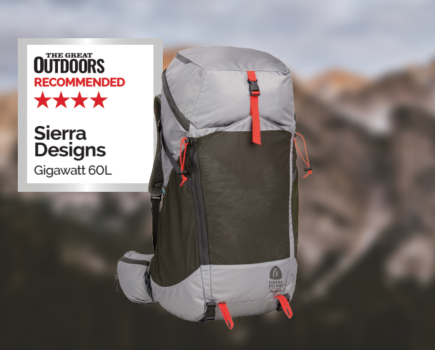The Arrow 30 pack is a budget friendly backpack which easily held my gear (waterproof, mid-layer, lunch box, two-person survival shelter) with room to spare, and is a reasonably comfortable carry. Zipped side pockets comfortably swallowed my litre-Nalgene bottle and map case, while the well-sized single lid pocket accommodated accessories such as whistle and compass, beanie, gloves, neck scarf and more.
John Manning’s verdict
A tough traditional pack, well-made from robust fabric, that should serve for many years.- Heavy Duty
- Zipped side pockets
- single buckle pack entry
- removable/replaceable rain cover
- warm back system
- pockets inaccessible while wearing pack
- fiddly sternum adjustment
| Quick specs | |
|---|---|
| Price | £85 |
| Weight | 760g stated/739g on JM’s scales |
| Materials | Pack – PFC-free, 100% recycled 150D & 600D polyester fabrics with water-resistant PU treatment; rain cover – PFC-free, 100% recycled 70D nylon |
| Features | Berghaus Flow back system; detachable/replaceable rain cover; trekking pole attachments; hydration system compatible; key clip in large, single lid pocket; adjustable sternum strap; ice axe attachment points |
| Size | 30-litre |
| Version | Unisex |
| Brand site | www.berghaus.com |
The main body of the pack is made from 600D polyester, while the snow/rain collar is in lighter 150D fabric, all PU-treated for water resistance. Ancillary features include a key clip in the lid, pole attachments and, anchored within its own Velcro-fastened base pocket, a rain cover made from a PFC-free recycled 70D nylon; it’s removable, so it can be replaced if torn or ripped off by strong winds.
The Arrow 30 is hydration bladder compatible, with a single back-of-the-neck hose port by the pack’s grab handle, the bladder itself being suspended within an internal sleeve by a single Velcro loop. The generous waist belt tightens effectively; the sternum strap prevents unwanted wobbling but is fiddly to adjust, as each side has to be removed then re-attached to the shoulder straps. Shoulder strap lengths are adjustable but there’s no fine tuning available above the shoulders themselves.
Berghaus’s Flow back system consists of a two parallel, vertical, vented foam pads, the a gap between them ranging from two inches wide at the top of the spine, to three inches wide mid-spine, to an inch at the waist. It’s designed to keep the pack away from your back, while allowing some airflow to dissipate condensing sweat. In practice, I found that my back became sweaty on steep ascents and, when I stopped on a summit and took off the pack, my back quickly cooled as condensed sweat was exposed to the wind, causing a chilly discomfort. Better than having the pack right next to the back, but not as effective as a sprung system that suspends the pack an inch or more away.
Tested by John Manning
Hiking the Pennine Way in 1986 inspired John to spend his life writing about the outdoors. He penned a triple award-winning column while sub-editor on his local daily newspaper, before serving 13 years as deputy editor on The Great Outdoors. He’s contributed to most UK walking magazines and edited several titles in his own right. His hiking CV includes the US Pacific Crest and John Muir Trails, New Zealand’s Rees-Dart and Kepler tracks, and Finland’s Bear’s Ring.








